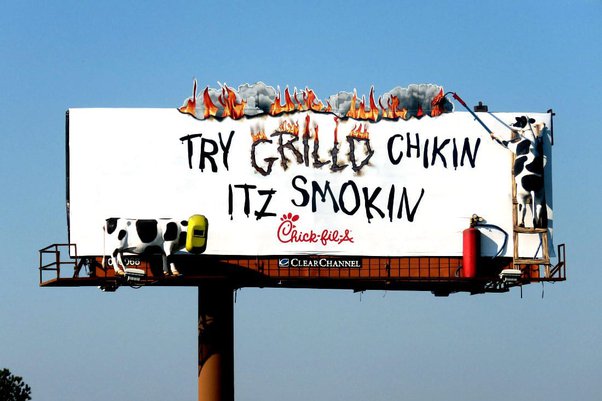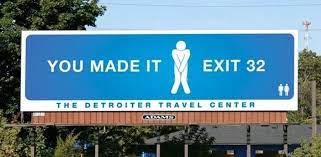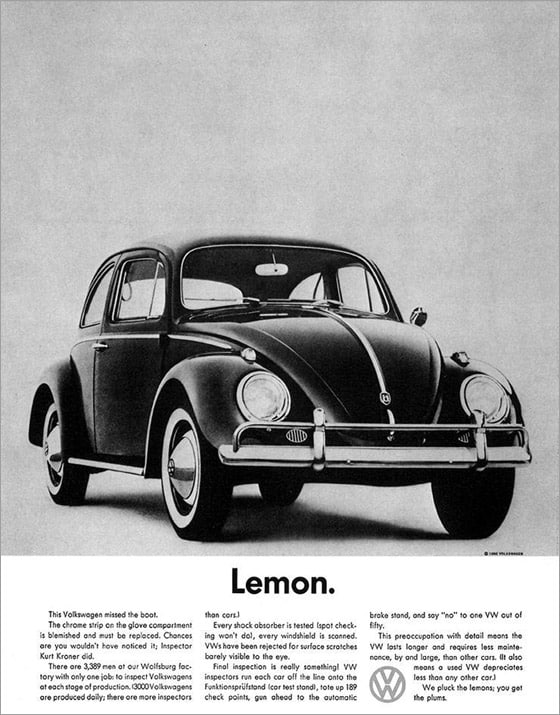
Continuous Partial Attention is how most of us live our lives most of the time.
That’s not an accusation or judgement; it’s just how it is.
And it’s important to recognize this because it’s exactly the state of mind your audience will be in when they encounter your ad:
- They are not solely listening to your radio ad; they’re driving, drinking coffee, thinking about work or family stuff, and also, partially listening to the radio as background chatter.
- They are not exclusively watching your TV ad; they are catching the tail end of it as they walk back to the sofa from grabbing a snack, or they’re sort of half-listening while they look at their smartphone until their show comes back on.
- They are not fully contemplating your billboard; they’re driving past it while talking on their cell phone and sucking down a smoothie.
We are all, as T.S. Eliot wrote, “distracted from distraction by distraction.”
So how can you craft ads capable of working even when they’re only given partial attention?
Answer:
- Make use of Brand Codes so that you will be easily identified as the advertiser, even if the audience is highly distracted, and
- Craft ads capable of pulling conscious attention onto the ad for better engagement.
So let’s look at Brand Codes first.
Brand Codes Make Your Ads Easy to Identify
Substantial research shows that brand distinctiveness is at least as important as brand differentiation.
Meaning that “merely” showing up on customers’ radars as identifiably and distinctively YOU is as important as any claims to superiority.
Throw in an audience that’s only half paying attention, and it becomes massively important that they recognize your ad as yours, even if they only catch a few seconds worth of it and never hear your name.
The solution to this challenge is to make effective use of brand codes, aka Distinctive Brand Assets.
For radio ads, distinctive music, characters or spokesperson, brandable chunks, and jingles or ear-wormy taglines all work to help a distracted listener “clue in” to the fact that this is your ad.
This allows your ad to build familiarity and mental availability in the audience even IF the ad never gains that listener’s full attention.
And this process works exactly the same with visual brand codes.
Think you could tell a Frosted Flakes ad from across the room when half the screen is blocked and you’re trying to pop the top on a beer?
Of course you can!
Between Tony the Tiger, the packaging, and “They’re Grrrreat!” the ads are pretty unmistakable, no matter how distracted you might be.
Same thing with a Chick-Fil-A billboard.

One glance at those cows, along with their delightfully hand-scrawled and misspelled words, and you know whose billboard that is, even as you’re driving down the road, drinking your latte, and listening to your favorite podcast.
So brand codes are the key to making your branding effective in a world where the audience is only ever giving your ads partial attention.
Intrigue, Provocation, and Relevance
Of course, you don’t want to settle for partial attention if you CAN manage to gain full engagement.
Why not craft ads capable of compelling an audience to move from partial to full attention?
To do this, your ad must break from the expected patterns. Your ad must be perceived as new, surprising, and different.
And/or, you must be especially relevant to the immediate needs and goals of the audience.
 For example, this billboard would command your full attention if you were driving along with a painfully full bladder. That’s relevance.
For example, this billboard would command your full attention if you were driving along with a painfully full bladder. That’s relevance.
But the only immediate need most branding campaigns can tap into is the need to be entertained by something more interesting than the mundane routine of daily life.
And in my personal opinion, ads that break a pattern while offering the promise of entertainment tend to make use of one of two main strategies:
- Provoke the audience by touching upon the taboo — sex, violence, obscenity, etc.
- Intrigue the audience by suggesting a deeper story behind the unusual interruption of expected patterns.
For the first category, an example of a provocative billboard might look like this.

It definitely gains attention.
But notice that despite gaining your full attention, the ad doesn’t brand very well.
Why?
Because branding is association design.
And you almost certainly don’t want your brand associated with the crudely obscene.
Moreover, audiences tend to remember the obscene but forget the brand.
This is where intrigue becomes infinitely more useful than mere provocation.
Because intrigue allows an advertisement to pull you into a story, which can then change your state of mind and create positive associations for the brand.
In advertising lore, the canonical example of an ad using this type of intrigue is this print ad for VW (crafted by the legendary DBB):

But this type of advertising can be done just as easily on radio as any “visual medium.”
The intrigue pulls you in without being provocatively obscene, and once you’re into the story, the messaging is able to powerfully brand the company.
What About Your Advertising?
So that’s it.
You — and your prospective customers — live in a world dominated by Continuous Partial Attention.
That means any ad that can’t work in that environment won’t work at all.
And the only way proper brand-building ads can work in such an environment are ones that make full use of brand codes and story-based intrigue.
So if your ads aren’t making use of these tools, the only real solution is to hire an ad team capable of crafting an ad campaign that does.
- Getting a Foot in the Door — Of Perception - November 27, 2025
- What Digital Superstars Know About Offline Advertising - November 17, 2025
- Unmistakable: A Tale of Two Boots and Branding Done Right - November 8, 2025
